Research hotspots and theme trends in post-traumatic growth: A coword analysis based on keywords
2023-05-14KihnYngJixinLuLingynDunHiyngTngZufeiBoYingLiuXiolinJing
Kihn Yng ,Jixin Lu ,Lingyn Dun ,Hiyng Tng ,Zufei Bo ,Ying Liu ,Xiolin Jing
a School of Preclinical Medicine/ School of Nursing,Chengdu University,Chengdu,Sichuan,China
b West China School of Nursing/ West China Hospital,Sichuan University,Chengdu,Sichuan,China
Keywords: Co-word analysis Hotspots Post-traumatic growth Survivors Trends
ABSTRACT Objectives: To analyze and summarize the research hotspots and advancement of post-traumatic growth(PTG) over the past 15 years based on co-word analysis of keywords,and provide references for PTGrelated research and clinical intervention.Methods:All studies related to PTG were retrieved from PubMed and Web of Science (WOS) from January 2013 to July 2022.A total of 11 Medical Subject Headings (MeSH) and keywords were used to identify qualified studies.Bibliographic Item Co-occurrence Matrix Builder (BICOMB;version 2.0) was used to conduct high-frequency keywords extraction and matrix setup,Graphical Clustering Toolkit(gCLUTO;version 1.0)was employed to perform clustering analysis,and SPSS(version 25.0)was used to carry out strategic diagram analysis.Results:A total of 2,370 publications were selected,from which 38 high-frequency keywords were extracted.The results revealed six research hotspots on PTG during the period from 2013 to 2022,including research on i)emotional reactions after negative life events,ii)PTG among cancer survivors,iii)rumination and resilience after trauma,iv)PTG among children and adolescents,v)role of social support and coping strategy in PTG,and vi) association between PTG and quality of life.Conclusions:This co-word analysis effectively reveals an overview of PTG over the past 15 years.The six research categories deduced from this study can reflect that the research content in the field of PTG is abundant,but some research topics have not yet been mature.The findings of this study are of great value to future investigations associated with PTG.
What is known?
·Trauma exposure has been identified as a risk factor for posttraumatic stress disorder (PTSD).
·Individuals with trauma not only have negative reactions but also may have positive changes,such as post-traumatic growth(PTG).
·There are various research contents on PTG in the literature.
What is new?
·There are six hotspots in PTG between 2013 and 2022,which reflect the theme trends in PTG to some extent.
·The co-word analysis across a 15-year span,describing an overall command of the PTG research topics,provides some valuable hints for researchers when conducting in-depth and new research.
1.Introduction
Trauma refers to an actual or potential event that threatens or seriously injures life,such as multiple or chronic physical injuries,traumatic interpersonal experiences,and a series of reactions caused by it[1].Stress disorder is considered to be one of the most common and typical negative effects after trauma,including acute stress disorder(ASD)and post-traumatic stress disorder(PTSD)[2].Even if the physical trauma is healed,the mental injury and psychological impact can adversely affect the individual life and affect the individual survival benefits exceedingly.For a long time,scholars have been focusing on the research of PTSD and have a long history of minimizing the negative effects of trauma through clinical interventions.
With the development of positive psychology,many research results showed that significant trauma would not only bring adverse effects to individuals,but also promote them to show positive changes related to growth [3].This phenomenon was defined as post-traumatic growth(PTG)by Tedeschi and Calhoun in 1996 [4].PTG refers to the experience of positive changes in the struggle against highly traumatic events,mainly including changes in life attitudes,self,and interpersonal relationships [4].With the development of post-traumatic growth inventory (PTGI),the connotation of PTG has expanded to five domains: personal strength,relating to others,appreciation of life,openness to new possibilities,and spiritual change[5].A meta-analysis showed that up to 52% of participants reported moderate to high levels of PTG after suffering a trauma [6].In recent years,there have been more and more studies on PTG,e.g.,the PTG experiences in a military or natural disaster (such as earthquake,flood,and tornado) context[7,8],the PTG level and its trajectories over time among cancer patients[9],the influencing factors of PTG[9,10],the post-disaster psychological intervention and reconstruction[11],the relationship between PTG and PTSD and the mechanisms of action [8],the effects of coping strategy on PTG [12],the correlation/mediation analysis on PTG and social support [13],mental resilience [14],rumination [12],optimism [15],gratitude [16],self-efficacy [17],volitional personality trait [18],and secure attachment [19].For example,Husson et al.found that among 169 cancer patients aged 14-39 years,45% and 27% remained at stable high and low PTG levels,respectively,and the patients who maintained a high PTG level were mostly younger,female,and those receiving chemotherapy[9].Platte et al.’s study revealed that self-sufficient coping,socially supported coping,and deliberate rumination were positively correlated with PTG [12].Campodonico et al.conducted a cross-sectional study among 85 patients with experiences of psychosis and found that resilience and adaptive coping explained 44%of PTG variance[14].Moreover,many narrative reviews,systematic reviews,and meta-analyses have been conducted to explore which factors are conducive to different outcomes following trauma[7,20].
The concept of co-word analysis was first proposed and described by Callon et al.in the middle and later of the 1970s[21].In the late 1990s,as one of the content analysis methods,co-word analysis was basically mature,applied to various disciplines,and achieved fruitful research results [9,22].Further,co-word analysis is also a bibliometric analysis method,which is based on the fact that a set of professional words can represent research literature in a certain field [23].In this analysis,the relationship between two interested keywords is defined as the frequency of their occurrence in the same study.Then,on the basis of this relationship,the research focus,framework,and trend are inferred by classifying keywords into different categories using statistical analyses,including clustering analysis and strategic diagram analysis[24].
In summary,although PTG and its domains,results,and predictors have been studied extensively for survivors of different types of traumatic events,we know that,to date,a synthesis and evaluation of the existing data remains outstanding.Thus,the primary aims of this study are to summarize research hotspots in PTG,forecast developing trends in PTG,and identify implications for clinical practice using co-word analysis.
2.Methods
2.1.Design
The study was a quantitative and co-word analysis based on keywords.Data were obtained from published literature.The data used in this co-word analysis were from previously published studies,so ethics approval was unnecessary.
2.2.Inclusion and exclusion criteria
Two independent researchers screened and selected all the literature.The inclusion criteria were as follows: i) studies mainly concerned with PTG;ii)studies were published in English;and iii)publication scope was between January 2013 and July 2022.Studies were eliminated if they i)did not contain selected Medical Subject Headings(MeSH)or keywords;ii)were summaries of conferences/meetings;or iii) were repeated reports.Any disagreements between the two researchers were settled by reaching a consensus with a third researcher.
2.3.Publication search
Literature data were searched and downloaded from PubMed and Web of Science (WOS).These databases contain the world's largest body of literature on biomedicine,provide a variety of retrieval methods and an automatic matching function of search terms,and have been developed into widely used bibliometric analysis databases.MeSH and keywords,including‘post-traumatic growth,psychological*’,‘growth,psychological post-traumatic’,‘psychological post-traumatic growth’,‘post-traumatic growth,psychological’,‘growth,psychological post-traumatic’,‘post traumatic growth,psychological’,‘psychological post-traumatic growth’,‘psychological post-traumatic growths’,‘post-traumatic growth’,‘growth,post-traumatic’,and ‘PTG’,were used to identify related studies.The titles and/or abstracts of the retrieved studies were separately inspected by two researchers to select studies that met the above inclusion criteria.Differences between the two researchers were unified by a third researcher.Qualified studies retrieved from PubMed were saved in ‘XML’ format,while those retrieved from WOS were saved in ‘TXT’ format.
2.4.Data analysis
2.4.1.High-frequency keywords extraction and matrix setup
Bibliographic Item Co-occurrence Matrix Builder (BICOMB;version 2.0)is a text mining system based on the co-occurrence of bibliographic items in literature databases [25].In our study,this software was employed to record and sort the frequency of primary keywords and sub-keywords,and construct a high-frequency keywords co-occurrence matrix.First,the retrieved literature data was imported into BICOMB to extract primary keywords and sub-keywords.Second,data cleaning was conducted before further processing.In this step,the singular and plural forms as well as upper and lower case forms of keywords,were merged,the keywords with similar meanings were merged,and those with spelling errors were revised.Third,high-frequency keywords were determined by Donohue formula.The equation represents the procedure for calculating the threshold value [26].
WhereIrepresents the number of keywords that showed up only once,andTstands for the threshold value of high-frequency keywords.According to this equation,keywords with an occurrence ≥Twere summarized as high-frequency keywords.Finally,a high-frequency keywords co-occurrence matrix was generated by BICOMB to support further clustering analysis and strategic diagram analysis.
2.4.2.Clustering analysis
The co-occurrence matrix was imported into Graphical Clustering Toolkit (gCLUTO;version 1.0),a software developed by Rasmussen and Karypis of Minnesota University [27],and a visual clustering analysis was conducted.First,we used ‘repeated bisection’ as the clustering method,‘I2’ for the criterion function,and‘cosine’ for the similarity function.Furthermore,in order to attain the optimal clustering effect,we repeated clustering analysis by selecting different cluster numbers.In the best clustering results,the internal similarity (ISim) value should be as large as possible,while the external similarity(ESim)value should be small.Second,a visual matrix and a visual mountain map were generated using gCLUTO.
In the matrix visualization,the black horizontal line separates clusters,the original values in the co-occurrence matrix are replaced by colours (the darker red represents the larger value),and the high-frequency keywords are displayed on the right side.The mountain visualization is a three-dimensional mountain graph.In the visual mountain map,the volume of the mountain is proportional to the number of keywords,the height of the mountain is proportional to the ISim value,and the colour of the peaks is inversely proportional to the internal standard deviation (ISdev)value,with red indicating low standard deviation and blue indicating high standard deviation.
2.4.3.Strategic diagram analysis
The co-occurrence matrix,generated by BICOMB,was imported into SPSS software (version 25.0;SPSS Inc.,Chicago,IL,USA),and according to clusters’ centrality and density,a strategic diagram was produced.The strategic diagram is a two-dimensional cocitation map,in which,four quadrants are classified by the X-and Y-axis.The X-axis represents centrality or the external cohesion index,which indicates the influences of clusters on each other,and the Y-axis expresses density or the internal cohesion index,indicating the conceptual development of a cluster.
3.Results
3.1.Literature selection
Initially,a total of 2,370 potential eligible publications were retrieved from PubMed and WOS,and 183 duplicates were removed.After the titles or/and abstracts of these studies were reviewed,121 studies were excluded for various reasons,such as non-English(5 studies),not related to PTG(64 studies),conference announcements (28 studies),and without keywords (24 studies).Finally,2,066 publications were obtained for the final analyses.The literature screening process and results are depicted in Fig.1.
3.2.High-frequency keywords extraction
There were 65 keywords that occurred only once.In the light of Donohue formula [26],theIvalue was 65 and theTvalue was 11.913.Therefore,the word frequency threshold value of highfrequency keywords was set at 11.913,and 38 high-frequency keywords were finally extracted.Table 1 lists the high-frequency keywords from the included publications on PTG.Furthermore,a 38*38 high-frequency keywords co-occurrence matrix was generated by BICOMB.
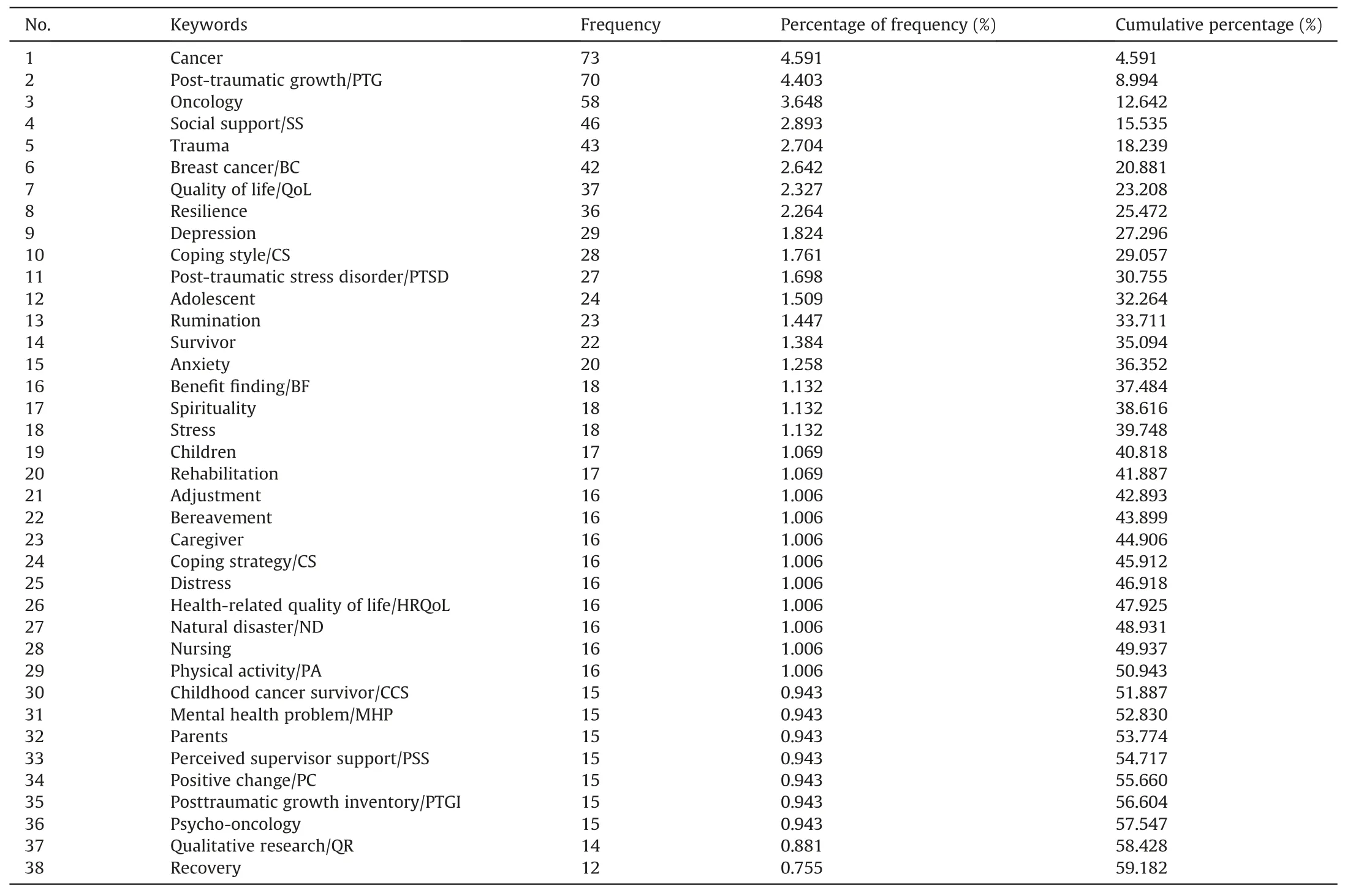
Table 1 High-frequency keywords from the included publications on PTG.
3.3.Clustering analysis
Based on the high-frequency keywords co-occurrence matrix,we carried out visualization by gCLUTO.In this software,it was found that when the clustering number was 6,the ISim value was larger while the ESim value was smaller,namely,we could get the best clustering results for this condition.The clustering parameters are displayed in Appendix A.Afterwards,a visual matrix and a visual mountain map were generated.First,in the matrix visualization (Fig.2),the black horizontal line separates clusters into Clusters 0,1,2,3,4,and 5.Cluster 0 included N9,N15,N18,and N25,Cluster 1 included N1,N2,N3,N6,N11,N14,N22,N27,N31,N35,and N36,Cluster 2 included N8,N13,N16,and N21,Cluster 3 included N12,N19,N28,N30,and N32,Cluster 4 included N4,N10,N17,N23,N24,N33,and N34,and Cluster 5 included N5,N7,N20,N26,N29,N37,and N38.Second,in the mountain visualization (Fig.3),the volume of Cluster 1 was the largest,indicating that it contained the most keywords,and the peak colour of Cluster 1 was the deepest,indicating that it had the lowest internal standard deviation.
3.4.Strategic diagram analysis
Based on the high-frequency keywords co-occurrence matrix,strategic diagram analysis was conducted,and a co-citation map of high-frequency keywords was generated using SPSS software(Fig.4).In Fig.4,Cluster 0 was located in Quadrant I,Cluster 1 was primarily located in Quadrants I and IV,Cluster 2 was located in Quadrant III,Cluster 3 was primarily located in Quadrants III and IV,Cluster 4 was primarily located in Quadrants I and II,and Cluster 5 was primarily located in Quadrants II and III.
4.Discussion
4.1.Research hotspot 1: research on emotional reactions after negative life events
Research Hotspot 1 was deduced from Cluster 0,which included four high-frequency keywords.Hotspot 1 mainly studied individuals' negative emotional reactions,such as anxiety and depression,after suffering negative life events and their relationship with PTG.With the increasing prevalence of disaster events,post-disaster mental health is one of the fields developing most rapidly.Several studies have reported that exposure to traumatic events is considered to be a risk factor for anxiety and depression[28,29].However,additional studies have shown that PTG can promote the development of resilience,thereby inhibiting depressive symptoms [30].For example.Berkman et al.summarized that survivors of childhood cancers were at risk of psychological symptoms,such as anxiety,depression,distress,and suicide,while the resilience and PTG experienced by some survivors might offset the impact of these adverse psychological factors [31].Bourdon et al.found that positive and emotional coping was positively correlated with PTG [32].Nishikawa et al.’s findings indicated that perceived stress at the time of negative life events directly or indirectly predicted current depression via PTG [33].Additionally,the results of strategic diagram analysis showed that the keywords in Cluster 0 had higher centrality and density,indicating that Hotspot 1 has developed in a relatively mature manner.
4.2.Research hotspot 2: research on PTG among cancer survivors
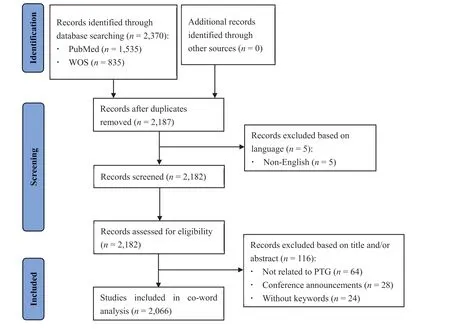
Fig.1.Flow diagram of study selection.
Research Hotspot 2 was deduced from Cluster 1,which included 11 high-frequency keywords.This hotspot primarily included research about the development of PTG scale for patients with cancer and the influencing factors of PTG level in cancer survivors of different ages.Ramos et al.developed the PTGI for 205 Portuguese women diagnosed with breast cancer [34].Weinstein et al.found that 2802 childhood cancer survivors' PTG level was significantly related to age at diagnosis,chronic health status,cancer recurrence,and cancer type [10].Arpawong et al.’s study revealed that 87% of cancer survivors experienced at least one positive life change,and positive valence PTG scores were negatively correlated with age at diagnosis and nausea reports [35].Yang and Ha found that 121 older cancer survivors' PTG was related to significant improvement in social and family well-being [36].Kim and Son conducted a cross-sectional study among 140 colorectal cancer patients with ostomies,and found that PTG and social support were positively correlated with psychological and social well-being[37].As to the issue of different PTG levels in different cancer stages,scholars have made in-depth studies [38,39],but mostly from a large time span of cancer onset and prognosis for macro-analysis.In the light of strategic diagram analysis,the centrality values of all keywords were positive,which proved that this hotspot had been the core research theme,but some keywords were located in Quadrant IV,hinting that scholars should further deepen the research on this hotspot and improve the maturity of the research content.
4.3.Research hotspot 3:research on rumination and resilience after trauma
Research Hotspot 3 was deduced from Cluster 2,which included four high-frequency keywords.Hotspot 3 mainly included research on the influence of different ruminations on PTG,and the level of resilience and its related factors after suffering major trauma.Rumination refers to the cognitive process of thinking about traumatic events and their consequences,including intrusive rumination and deliberate rumination [40].Many previous studies have found that rumination had a significant relationship with PTG and PTSD [12,41],but there are different views on the impact of different ruminations on PTG.Some scholars believed that intrusive rumination could encourage individuals to pay attention to the negative thoughts and emotions caused by traumatic events,thus leading to negative views on events and the future [42,43].However,some other scholars thought that intrusive rumination has a positive impact on PTG[44],and deliberate rumination can provide individuals with opportunities to further recognize and deal with traumatic events,which is conducive to post-traumatic self-understanding and reconstruction [12,45].Through a systematic review,Mehta et al.found that resilience is a kind of post-traumatic response,in which low resilience was related to the expression patterns of immune and dopamine genes,while high resilience was associated with the weakening of inflammatory response [46].Schaefer et al.investigated the resilience and PTG of 161 university students who suffered physical violence or sexual abuse in childhood,and the multiple regression analyses showed the protective effect of optimism on resilience and PTG [47].Besides,the four keywords in Hotspot 3 located in Quadrant III indicated that this hotspot's research contents have not been paid enough attention to and need further exploration.
4.4.Research hotspot 4: research on PTG among children and adolescents
Research Hotspot 4 was deduced from Cluster 3,which included five high-frequency keywords.Hotspot 4 mainly included research on the predictors of PTG among child and adolescent survivors of cancer or natural disaster (such as earthquakes and tornadoes).Turner et al.conducted a systematic review and meta-analysis to identify the influencing factors of PTG among children and adolescents who were affected by paediatric cancer,and the results showed that PTG level was negatively correlated with time since diagnosis and treatment completion time,but positively correlated with age at diagnosis,age at the survey,post-traumatic stresssymptoms,social support,and optimism [48].Wang et al.used questionnaires to investigate 706 adolescent survivors of the Ya’an earthquake,and found that survivor guilt had a positive effect on PTG and PTSD and gratitude partly mediated the relationship between survivor guilt and both PTG and PTSD[16].Furthermore,the strategic diagram analysis showed that the density values of keywords in Hotspot 4 were all negative,indicating that the research contents in this hotspot have not yet been mature.
4.5.Research hotspot 5: research on the role of social support and coping strategy in PTG
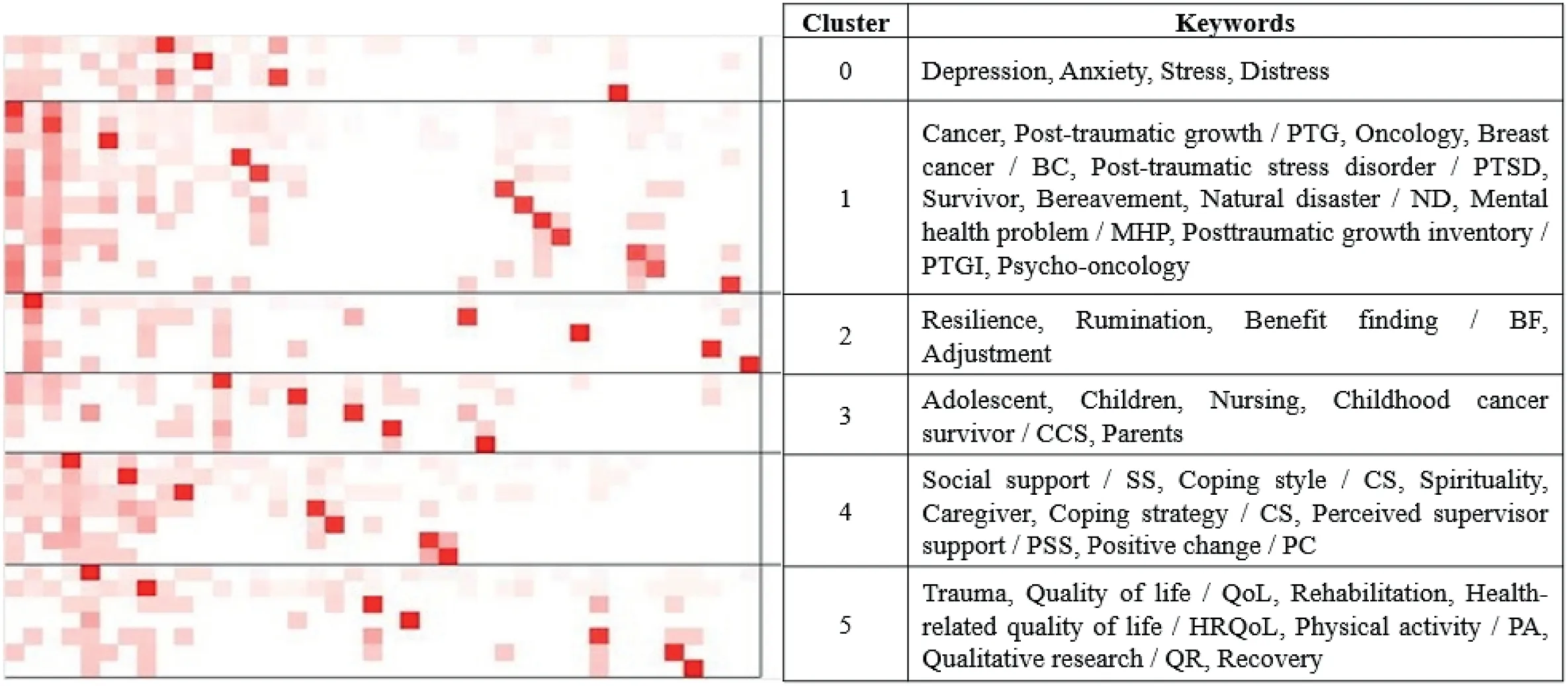
Fig.2.Matrix visualization of high-frequency keywords.
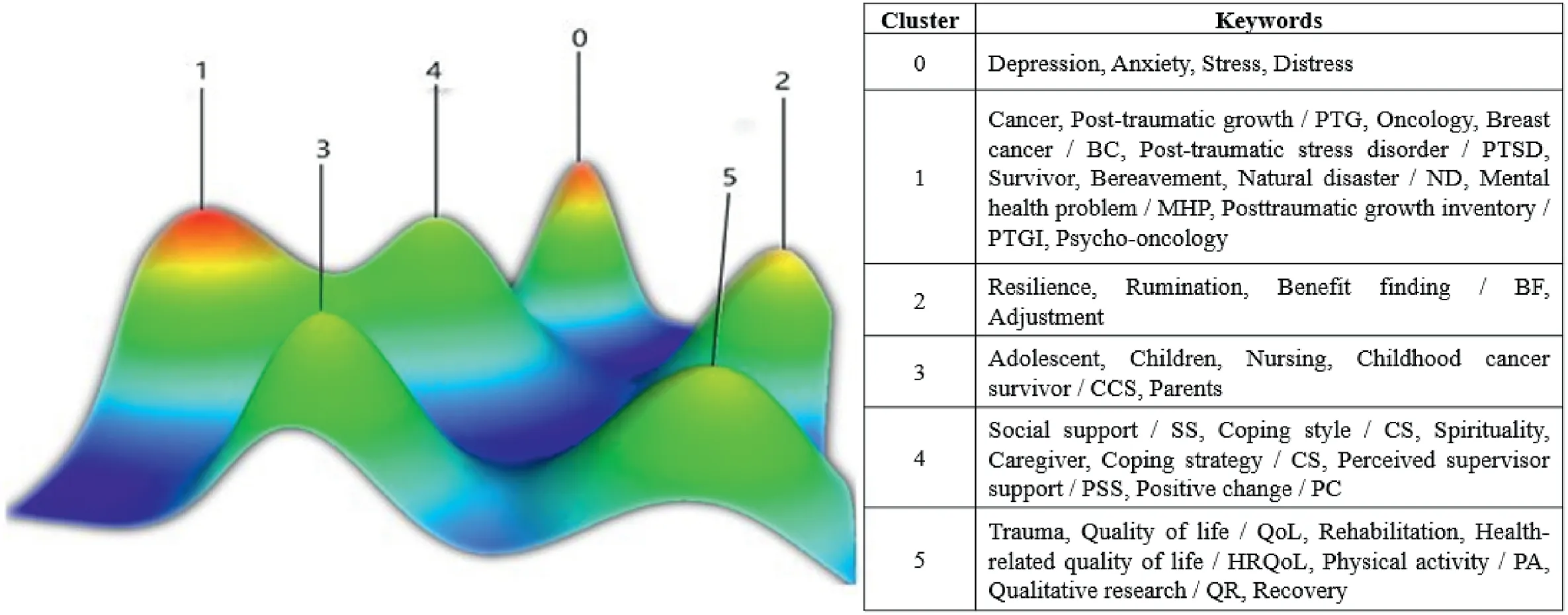
Fig.3.Mountain visualization of high-frequency keywords.
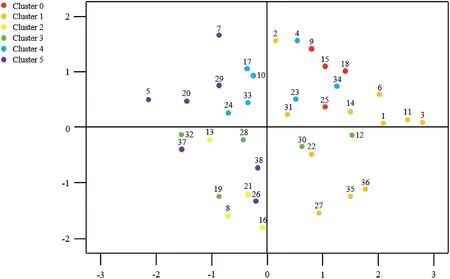
Fig.4.Co-citation map of high-frequency keywords.
Research Hotspot 5 was deduced from Cluster 4,which included seven high-frequency keywords.This hotspot mainly included research on the influence of social support on PTG,and the relationship between social support or coping strategy and PTG.Nouzari et al.investigated the PTG level in 112 caregivers of patients with gastrointestinal cancer in Iran and explored the relationship between PTG sub-dimensions and both social support and hope[49].According to their study,caregivers had a good level of PTG and a significant relationship between PTG,social support,and hope was displayed [49].Likewise,Turner et al.found that cancer patients’ PTG level was positively correlated with their social support [48],and Wang et al.found that earthquake survivors’ social support party mediated the relationship between their survivor guilt and PTG [16].In addition,coping strategy is defined as cognitive or behavioral responses to stress and traumatic events,which is a complex process [50].Hamama-Raz and Minerbi believed that both problem centered and emotion centered coping strategies were related to PTG and secondary trauma [51].According to strategic diagram analysis,keywords in Cluster 4 were concentrated in Quadrants I and II,which hinted that this cluster had higher density,that is,the internal cohesion index in keywords in Cluster 4 was relatively good.
4.6.Research hotspot 6: research on the association between PTG and quality of life
Research Hotspot 6 was deduced from Cluster 5,which included seven high-frequency keywords.How to deal with disaster risk and improve quality of life in patients or individuals suffering graveness disaster are of utmost importance and have become major academic issues of common concern.Some studies suggested that quality of life was positively correlated with PTG,indicating that quality of life can be improved by developing PTG [52,53].Nevertheless,a few studies have found null or negative relations between them [54,55].The reasons for these differences may be related to the following factors: i) different traumatic events may have different effects on PTG and quality of life,ii) some unidentified potential variables may change the relationship between PTG and quality of life,and iii)differences in sampling methods and research design methods between different studies lead to the inability to directly compare the results of various studies.Furthermore,the results of the strategic diagram analysis showed that Cluster 5 had lower centrality,in other words,the external cohesion index between clusters was not enough.
4.7.Relevance for nursing research and clinical practice
Our study comprehensively analyzed the research hotspots and theme trends of PTG.First,we found that there were six hotspots in PTG during the period of 2013-2022.In addition,some research contents have not yet been mature and need to be further explored.Generally,our findings can further enrich the theoretical basis of PTG related research.Moreover,medical personnel can refer to the conclusions of this study and combine them with treatment guidelines,carry out individualized health management,optimize treatment methods in the process of trauma rehabilitation,and accelerate the occurrence of PTG.
4.8.Limitations
Several potential limitations of our study should be acknowledged.First,we only retrieve two main databases,so the keywords related to this co-word analysis not included in the two databases might be omitted.Second,the understanding bias caused by language and cultural differences might affect the differences in keyword extraction,which might eventually reduce the willingness of researchers from different locations,languages,and cultures to adopt the findings of this study.Third,this co-word analysis was based on high-frequency keywords and therefore newly emerging research themes with low occurrence were eliminated.
5.Conclusions
In this co-word analysis,we summarized six hotspots for PTG research.We found that the emotional reactions after negative life events and the relationship between PTG and rumination,resilience,social support,coping strategy,and quality of life have attracted extensive and active research interest,and the research objects are mostly cancer survivors and adolescents.However,due to the limitations of the study,additional robust trials about the immature and peripheral topics are warranted to confirm our findings.
Funding
This study was funded by the Chengdu University Postgraduate Education and Teaching Reform Project(cdjgy202206),the Science and Technology Plan Project of Sichuan Province (2020YFS0157),and the West China Nursing Discipline Development Special Fund Project,Sichuan University(HXHL19011).The funding bodies in no way influenced the authors in writing the manuscript.
CRediT authorship contribution statement
Kaihan Yang:Conceptualization,Methodology,Validation,Data curation,Writing -original draft,Writing -review &editing,Visualization,Funding acquisition.Jiaxin Lu:Methodology,Data curation,Writing -original draft,Visualization.Lingyan Duan:Methodology,Data curation,Writing-original draft,Visualization.Haiyang Tang:Writing -review &editing.Zufei Bao:Writing -review&editing.Ying Liu:Writing-original draft.Xiaolian Jiang:Writing -review&editing,Funding acquisition.
Data availability statement
The datasets used and analyzed during the current study are available from the corresponding author on reasonable request.
Declaration of competing interest
The authors declare that they have no competing interests.
Acknowledgement
The authors thank the School of Preclinical Medicine/School of Nursing,Chengdu University,where the research presented in this study was mainly conducted.
Appendices.Supplementary data
Supplementary data to this article can be found online at https://doi.org/10.1016/j.ijnss.2023.03.001.
杂志排行
International Journal of Nursing Sciences的其它文章
- A feasibility study on home-based kyphosis-specific exercises on reducing thoracic hyperkyphosis in older adults
- Development and validation of dynamic nomogram of frailty risk for older patients hospitalized with heart failure
- Validation of the Portuguese version of the social isolation scale with a sample of community-dwelling older adults
- Effects of pre-operative education tailored to information-seeking styles on pre-operative anxiety and depression among patients undergoing percutaneous coronary intervention: A randomized controlled trial
- Factors influencing the quality of sexual life in the older adults: A scoping review
- Comparison of the effects of three kinds of hand exercises on improving limb function in patients after transradial cardiac catheterization
